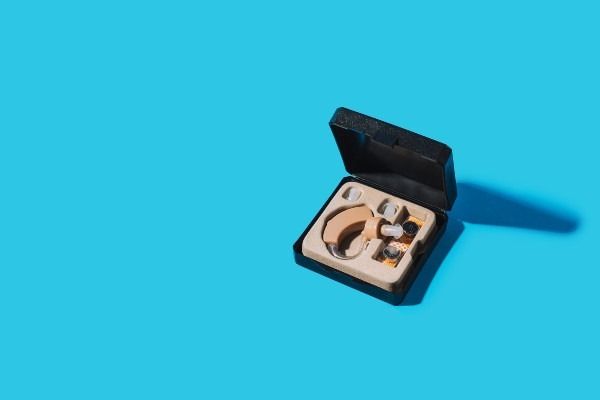Introduction
The world around us is a symphony of sounds, each note playing a crucial role in our daily lives. However, for individuals with mixed hearing loss (MHL), this symphony can become discordant, affecting their ability to communicate, socialize, and engage fully in their daily activities. MHL, a complex condition that combines conductive and sensorineural hearing loss, presents unique challenges that require comprehensive understanding and effective management strategies.
Demystifying Conductive Hearing Loss
Conductive hearing loss arises from a disruption in the outer or middle ear, hindering the transmission of sound waves to the inner ear. Common causes of conductive hearing loss include:
- Earwax buildup (cerumen impaction)
- Middle ear infections or otitis media
- Perforated eardrum (tympanic membrane perforation)
- Otosclerosis, a condition that causes hardening of the middle ear bones
- Foreign objects in the ear canal
Deciphering Sensorineural Hearing Loss
Sensorineural hearing loss stems from damage to the inner ear structures, particularly the hair cells in the cochlea, or the auditory nerve pathway to the brain. This type of hearing loss is often irreversible and can be caused by:
- Age-related hearing loss (presbycusis)
- Noise exposure
- Certain medications
- Genetic factors
- Head trauma
The Enigma of Mixed Hearing Loss
MHL presents as a combination of symptoms associated with both conductive and sensorineural hearing loss. These symptoms may include:
- Difficulty hearing soft sounds
- Muffled or distorted sounds
- Trouble understanding speech, especially in noisy environments
- Tinnitus, a ringing or buzzing sensation in the ears
The Impact of Mixed Hearing Loss on Daily Life
MHL can significantly impact an individual’s daily life, affecting both personal and professional interactions. Common challenges faced by individuals with MHL include:
- Difficulty following conversations in group settings
- Challenges understanding lectures or presentations
- Social isolation due to hearing difficulties
- Struggles comprehending television or radio broadcasts
- Workplace challenges due to impaired hearing
Tweak Digital Hearing Amplifier
Experience the epitome of sophisticated sound with Tweak, the revolutionary device that brings a new dimension to your auditory experience. Harnessing the power of innovative patented technology, Tweak offers you the freedom to fine-tune your hearing with a diverse range of amplification options. Whether you prefer a subtle enhancement or a more pronounced boost, Tweak empowers you to effortlessly customize your acoustic world.
Crafted with meticulous care and expertise, Tweak represents the brilliant collaboration between an esteemed audiologist and a team of dedicated acoustic engineers. Their collective passion for impeccable sound quality shines through in every detail of this remarkable device. Designed to elevate your hearing capabilities across any environment, Tweak utilizes cutting-edge technology to ensure that you can fully engage with the sounds that matter most to you.
Unlock the extraordinary potential of affordable sound quality with Tweak. By leveraging the latest advancements in digital technology, this ingenious device delivers an auditory experience that rivals that of prescription hearing aids. With premium-grade components at its core, Tweak offers you uncompromising performance without breaking the bank. Immerse yourself in a world of enhanced sound, where clarity and richness seamlessly merge to create an exceptional listening experience.
Navigating the Challenges of Mixed Hearing Loss: Effective Management Strategies
Despite the challenges posed by MHL, there are effective strategies to manage this condition and enhance communication:
- Seeking hearing aids or assistive listening devices: Hearing aids can amplify sounds and improve speech understanding. Assistive listening devices, such as cochlear implants, can provide direct auditory stimulation to the inner ear.
- Utilizing communication strategies: Speak clearly and face to face, minimize background noise, and use lip reading and visual cues to support understanding.
- Seeking support groups and counseling: Connecting with others who share similar experiences can provide emotional support and valuable coping strategies.
- Staying up-to-date on advancements: Research and advancements in hearing aid technology, cochlear implants, and gene therapy may offer new treatment options in the future.
Frequently Asked Questions (FAQs)
- Can MHL be prevented?
While some causes of MHL, such as age-related hearing loss and noise exposure, are not preventable, measures like earwax removal, proper ear hygiene, and noise protection can help reduce the risk of conductive hearing loss.
- Are there different types of MHL?
Yes, MHL can be classified based on the severity of both conductive and sensorineural components. This classification helps determine the appropriate treatment plan.
- What is the prognosis for individuals with MHL?
The prognosis for MHL varies depending on the underlying causes and the severity of hearing loss. Early diagnosis and intervention can significantly improve hearing outcomes and overall quality of life.
Practical Tips for Living with Mixed Hearing Loss
- Advocate for yourself: Clearly communicate your hearing needs to family, friends, colleagues, and healthcare providers.
- Take advantage of technology: Utilize hearing aids, assistive listening devices, and smartphone apps designed for hearing support.
- Seek support: Join hearing loss support groups or online communities to connect with others who share your experiences.
- Educate yourself: Learn about MHL, its causes, and available treatment options.
Annotated References
- Schachern, P. A., & Taylor, G. M. (2008). Mixed hearing loss: A review. Journal of the American Academy of Audiology, 19(8), 517-529.**
This article provides a comprehensive overview of mixed hearing loss (MHL), including its definition, causes, diagnosis, and treatment options. The authors discuss the different types of MHL and how they can affect hearing. They also review the latest treatment options, including hearing aids and cochlear implants.
- Cullen, R. S., & Smith-Sloop, K. A. (2018). Management of mixed hearing loss. In Hearing loss: Diagnosis, assessment, and management (pp. 395-412). Plural Publishing.**
This chapter provides a detailed overview of the management of mixed hearing loss (MHL). The authors discuss the different types of MHL and the factors to consider when choosing a treatment plan. They also review the latest hearing aid technologies and cochlear implants.
Conclusion
Mixed hearing loss presents a unique set of challenges, but with proper diagnosis, treatment, and management strategies, individuals can effectively communicate and participate fully in their daily lives. Understanding the complexities of MHL and advocating for one’s hearing needs are crucial steps towards a fulfilling and enriching life. By embracing the symphony of sound, individuals with MHL can harmonize with the world around them.






